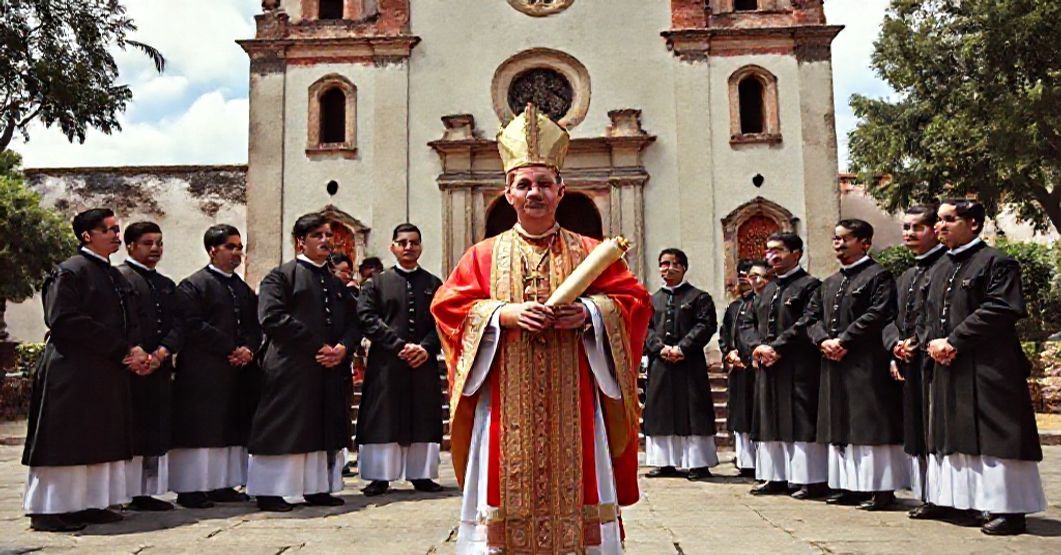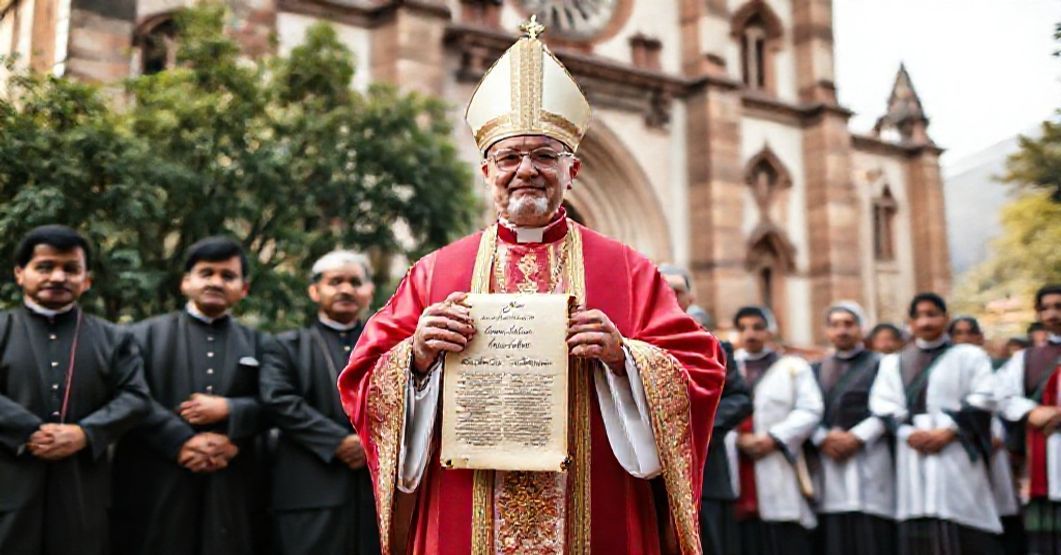Antipopes of the Antichurch



















Timeline of this heretical pontiff
Encyclical Letters
+ 15 posts1959
+ 7 posts1961
+ 4 posts1962
+ 2 posts1963
+ 2 postsApostolic Exhortations
+ 3 postsApostolic Constitutions
+ 93 posts1958
+ 6 posts1959
+ 87 postsMotu Proprio
+ 15 posts1958
+ 1 posts1959
+ 1 posts1962
+ 11 postsApostolic Letters
+ 151 posts1958
+ 4 posts1959
+ 63 posts1960
+ 78 posts1961
+ 1 posts1962
+ 4 posts1963
+ 1 postsSpeeches
+ 99 posts1958
+ 2 posts1959
+ 26 posts1960
+ 29 posts1961
+ 16 posts1962
+ 24 postsMessages
+ 6 posts1959
+ 4 postsHomilies
+ 4 postsLetters
+ 152 posts1958
+ 1 posts1959
+ 48 posts1960
+ 32 posts1961
+ 31 posts1962
+ 30 posts1963
+ 10 postsNot categorized
+ 1 posts1958
+ 1 postsNews feed


Christian Colonization of Mexico as Conciliar Power Play (1959.05.23)
Christianorum gregem… — already in the opening line of this apostolic constitution, John XXIII presents himself as the shepherd who, by an act of jurisdiction, carves a new diocesan structure — the so‑called Diocese of Tlaxcala — from the territories of Puebla (Angelorum) and Mexico City. The document delineates civil and ecclesiastical boundaries, designates Tlaxcala as episcopal seat with St Joseph’s church as cathedral, mandates at least an elementary seminary, channels chosen seminarians to the Roman Pius Latin American College, orders the erection of a chapter or, failing that, diocesan consultors, regulates benefices and property according to the 1917 Code, entrusts execution to the apostolic delegate, and cloaks everything in the solemn “perpetual” binding force of papal authority.


Delhiensis et Simlensis (1959.06.04)
This act of Giovanni Roncalli, styling himself “John XXIII,” erects the so‑called “Diocese of Simla” (Simlensis) in India by detaching territories from the then “Archdiocese of Delhi and Simla,” assigning its cathedral, defining its suffragan relationship, financial provisions, administration, and legal formalities within the conciliar missionary framework of the mid‑twentieth century. In one sentence: it is a juridical blueprint for extending an already infiltrated, proto‑conciliar apparatus, preparing the ground for the subsequent revolution against the visible structures of the Catholic Church.


Usumburaensis (1959.06.11)
The Latin text promulgated under the name of John XXIII on 11 June 1959 establishes a new Apostolic Vicariate of Usumbura in Ruanda-Urundi by detaching territories from the existing Vicariates of Ngozi and Kitega. It presents itself as a straightforward administrative act: a reconfiguration of missionary jurisdictions, promotion of indigenous clergy, and confirmation of ordinary canonical effects, sealed with the usual solemn formulae of papal authority and penalties for non-compliance.


Insularum Salomonicarum (1959.06.11)
The document published under the name of John XXIII, “Insularum Salomonicarum,” is an apostolic constitution (11 June 1959) that reorganizes ecclesiastical jurisdictions in the Solomon Islands. It detaches specified islands from the existing Apostolic Vicariates of the Northern and Southern Solomon Islands and erects a new Apostolic Vicariate of the Western Solomon Islands, entrusted to the Dominicans, with full rights and duties proper to such a vicariate in mission territories. Behind this seemingly technical act lies the self-revelation of a nascent regime that instrumentalizes ecclesiastical structures for the coming conciliar revolution, disguising future apostasy beneath the pious language of mission expansion.
Varia
Announcement:
– News feed –implemented
– Antipopes separate web sites with their all documents refutation – in progress
